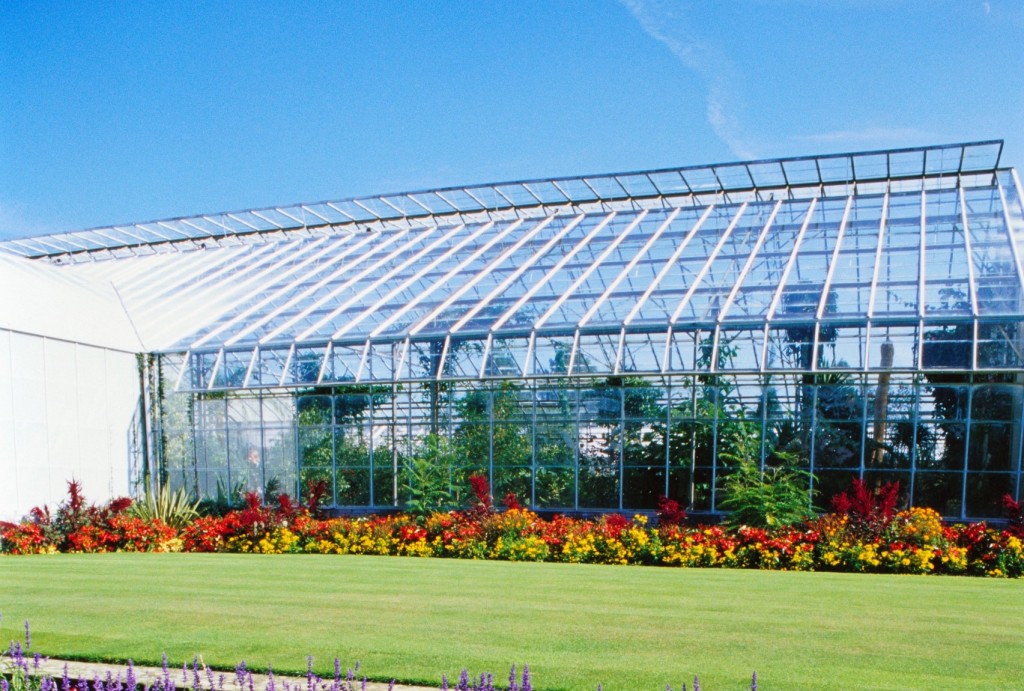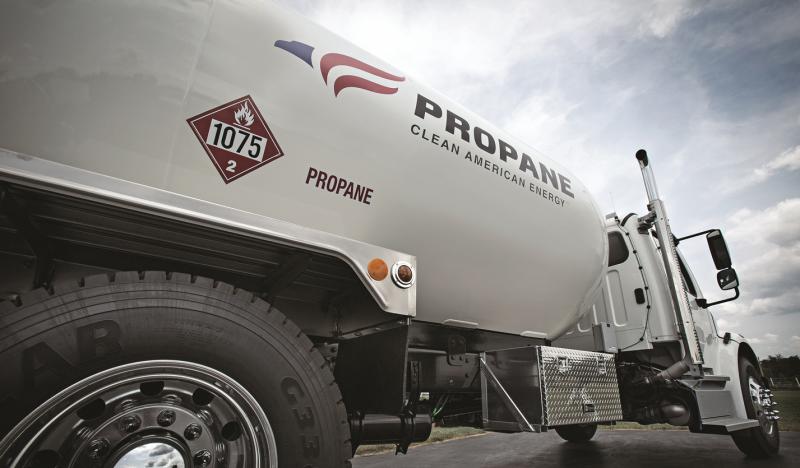
Reducing Your Greenhouse’s Carbon Footprint

For years, the horticulture industry has been at the forefront of the sustainability discussion. Greenhouses and nurseries were using recycled materials and initiating waste-reduction plans long before other industries recognized the need for environmental stewardship. Today, growers remain under pressure from retail garden centers, big box stores and their competitors to reduce harmful carbon emissions, conserve resources, and save money by implementing sustainable programs and systems.
Resource conservation and fuel efficiency are often defined as standards of sustainability in agriculture and a measure for sustainable certification; but calculating the exact energy demands of a greenhouse is difficult. Energy usage varies by case and is based on a great number of factors. However, a greenhouse’s energy choices can be a significant factor in both efficiency and emissions.
For many years, propane has demonstrated value to growers in the space-heating sector, where an estimated 80 percent of greenhouse energy is allocated. In recent decades, technological advances have increased efficiency and expanded propane’s versatility.
Today’s propane options go far beyond space heating to bring clean, efficient and affordable power to a myriad of applications such as water heating, on-road and off-road vehicles and backup power generation. Most importantly, all of these applications offer reductions in greenhouse gas emissions (GHGs).
Space Heating and Water Heating
Increasing the amount and quality of insulation used in a greenhouse structure is a standard practice designed to minimize heat loss and improve heating system efficiency. However, the energy source used to power a greenhouse’s space- and water-heating systems can also have a significant impact on both economics and the environment.
Propane-powered furnaces and boilers can warm buildings faster than electric heat air-forced heat pumps — an important consideration for commercial buildings that cycle through occupied and inactive periods. Furthermore, energy-efficient, propane-powered space heating systems consistently cost less to both purchase and install than heating-oil systems, air-source heat pumps, or ground-source heat pumps. Converting existing space heating systems to propane is fast and easy with heating unit change-outs. These change-outs significantly reduce initial conversion costs and leave existing heating-distribution systems intact.
And, because propane produces less than half as many GHGs as an equivalent amount of electricity from the U.S. grid, choosing a propane-powered furnace with an electric central air conditioner reduces GHG emissions by nearly 35 percent.
If you’re already using propane for climate control, that’s a great start. Installing a variety of additional propane-powered equipment such as tankless water heaters can help curb your carbon footprint even more.
The installation of a propane-powered tankless water heater can cut energy costs and reduce GHG emissions by nearly 50 percent compared with electricity, and more than 24 percent compared with fuel oil. Tankless water heaters can be installed individually or in a rack system with multiple units, depending on your hot water demand. In some cases, they can be used in place of a boiler to efficiently provide hot water for radiant heating systems.

Clean, abundant, American-made propane can significantly lower greenhouse gas emissions.
Combined Heat and Power Systems
On average, the power grid in the United States is only 30 percent efficient. This fact, combined with an increasing demand for more environmentally friendly energy sources, has inspired many businesses to turn to combined heat and power (CHP) sources for their projects.
Installing a propane-powered CHP is a unique way to bring both efficiency and resiliency to a greenhouse’s energy systems. CHP systems both provide heat and generate electricity with higher efficiency and lower emissions levels than conventional heating and grid-supplied power. CHPs eliminate transmission and distribution losses associated with purchasing electricity via the central grid, and recovered waste heat is used to meet a facility’s space-heating, water-heating, and cooling needs. As a result, CHP systems can operate at 70-80 percent (electric and thermal) efficiency. They can be ideal for retrofit situations when existing water-heating equipment needs to be replaced, electric rates are increasing, or on-site power generation is a high priority.
Because CHPs use less fuel to produce each unit of output, the propane-powered units are highly efficient and reduce overall greenhouse gas emissions by more than 14 percent compared with diesel and 44 percent compared with grid-supplied electricity.
Propane-Powered On- and Off-Road Vehicles
Using propane outside of your greenhouse to ‘green’ your vehicles, lawn care and maintenance equipment can help improve your business’ sustainability efforts. While many are familiar with propane-powered forklifts, new propane autogas trucks and commercial mowers can reduce operating costs and
cut emissions.
Propane-autogas-powered light- and medium-duty vehicles are available from Ford and GM, and growers can also convert existing vehicles with EPA- and CARB-certified kits. In many states, these vehicles are fuel tax exempt and financial incentives are available to assist with the cost of conversion. A propane-autogas-powered, light-duty truck emits 11 percent fewer greenhouse gas emissions than gasoline and costs less per gallon to refuel.
For facilities that use commercial lawn mowing equipment, propane is one of the only alternative fuels available to replace gasoline and diesel. There are more than 135 models of propane-powered commercial lawnmowers available from leading industry brands. The models all meet or exceed both EPA and CARB standards, and in fact, propane-powered mowers emit 15 percent fewer greenhouse gas emissions than gasoline-powered models. As a result, propane-powered equipment can be operated during ozone action days.
Backup Power
Another way to incorporate the emissions-reducing benefits of propane is through the addition of a backup power generator.
Like any business, greenhouses can’t afford extended downtime due to an unforeseen power outage. While power loss from the grid may not take down all of your systems, the ability to run at full capacity when the grid is down can be vital. This is especially true if your area experiences multi-day power outages. While storms, unpredictable weather and unreliable power grids create an uncertain supply of electricity, propane-powered standby generators provide insurance against power disruption — and the lost revenue an outage can bring. They can also protect critical systems, including heating, security, refrigeration, safety lighting, automatic doors and IT systems.
In the past, commercial standby generators were typically powered by expensive diesel systems. Today, manufacturers offer a number of affordable, propane-fueled standby generators that are powerful enough to serve a variety of commercial building sizes with capacities up to 400kw. There are many models of propane-powered standby generators that can provide backup power in the event of an outage, including some specifically designed to support solar, wind, or other renewable energy power generation technology.
Propane Just Makes Sense
While implementing every propane application may not be the best fit for your operation, capitalizing on the versatility, abundance and efficiency of propane can have a significant impact on greenhouse gas emissions. If you’re already using propane, including additional applications can compound both your energy cost savings and emission reduction efforts.
To learn more about the available propane applications, products and purchase incentives, visit www.buildwithpropane.com.
Reducing Your Greenhouse’s Carbon Footprint


 Video Library
Video Library 




















